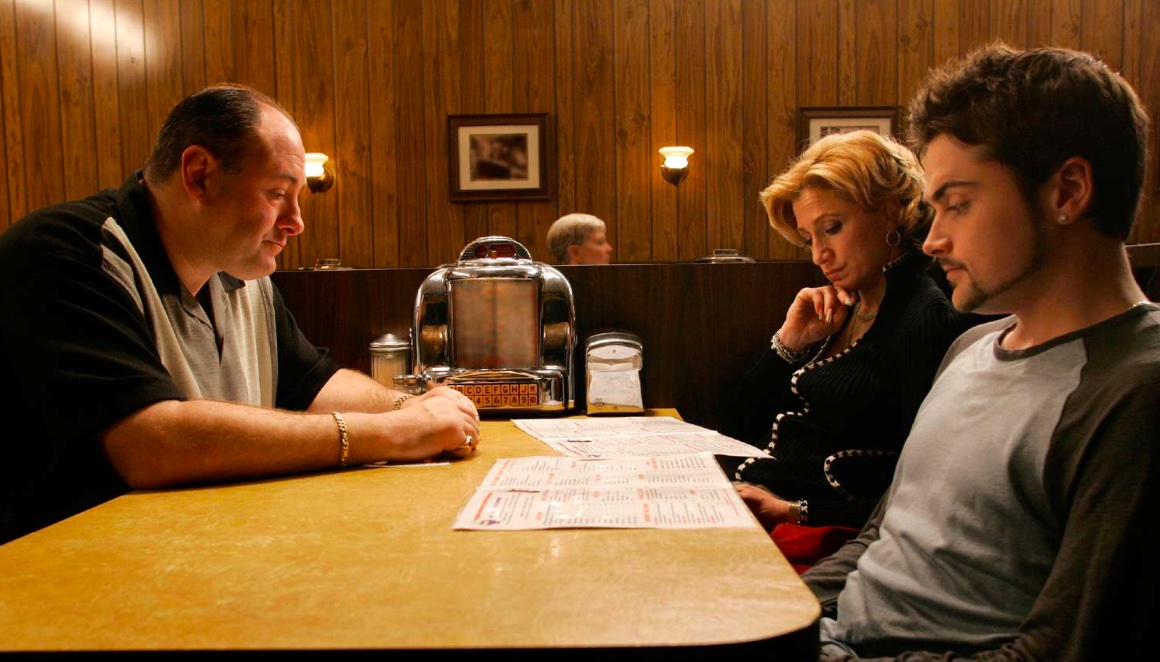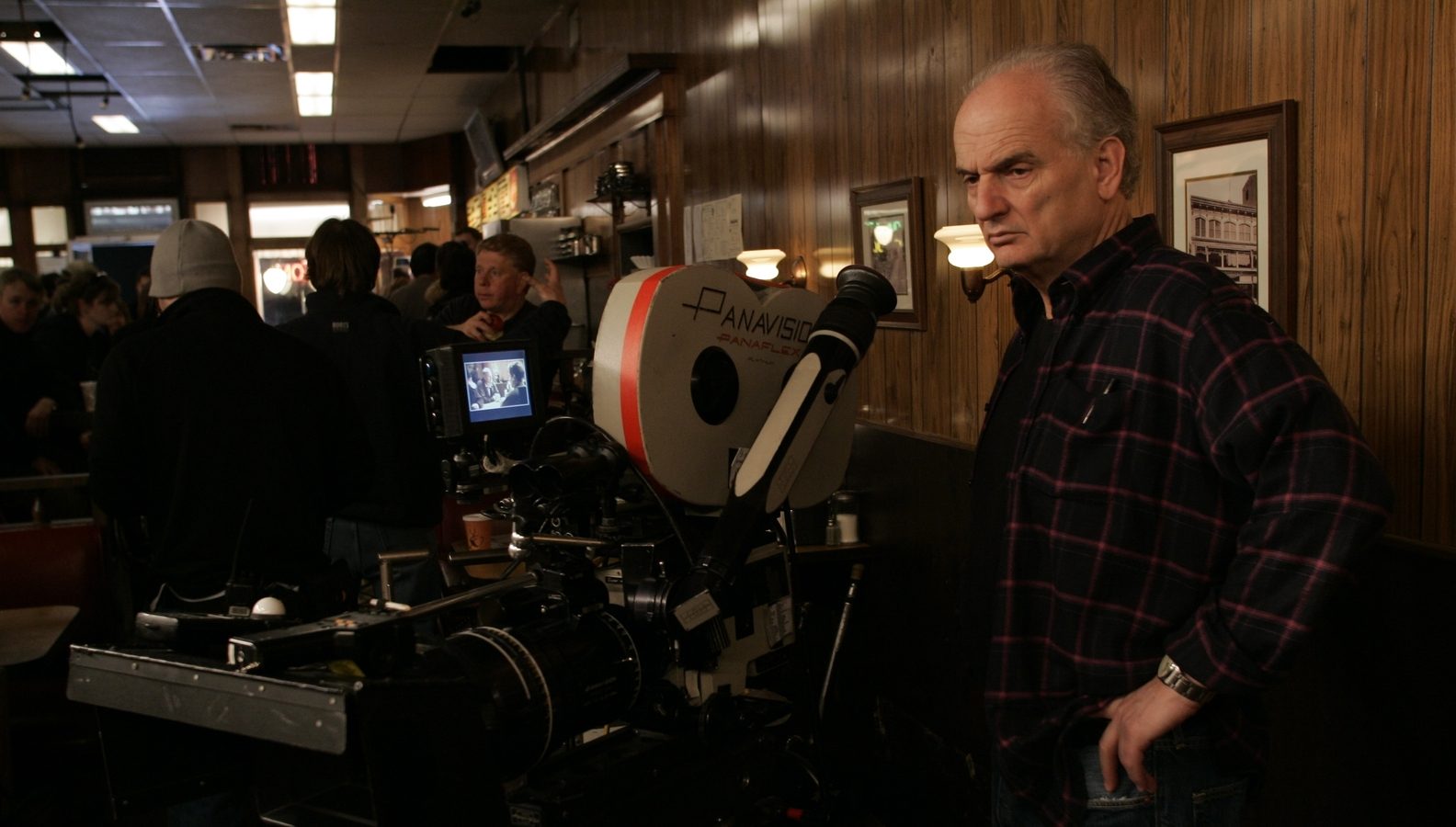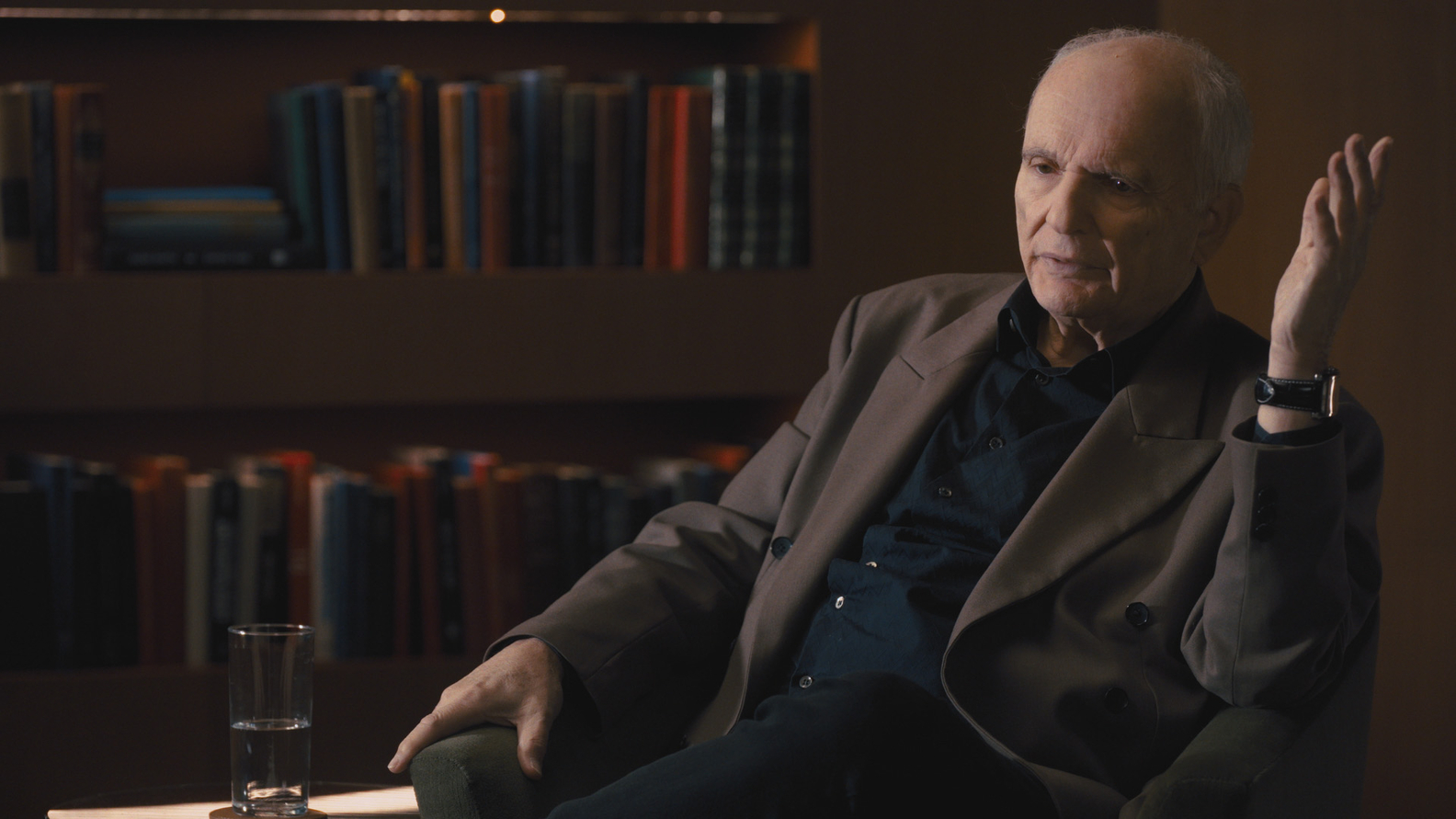Directed by Alex Gibney, HBO’s ‘Wise Guy: David Chase and The Sopranos’ is a two-part documentary that takes us into the mind of the creator of one of the best TV shows ever made. The spotlight falls on Chase as he talks about his career path, what inspired him to become a writer-director in Hollywood, and how, after several rejections, he got HBO to green-light the series that would change the course of television. Chase talks about the parts of his life that he brought into Tony’s story, including the influence of his mother, while the writers and the actors reveal their approach towards the show.
Unsurprisingly, the documentary also comes around to talking about the finale and why Chase made the infamous choice of ending ‘The Sopranos’ the way he did. Referencing several other scenes where he had to make difficult choices, the creator tries to explain the intent behind the divisive cut to black in the HBO series, while the documentary has a cut to black of its own. SPOILERS AHEAD
The Ending of Wise Guy Mirrors the Ending of The Sopranos

Talking about the ending of ‘The Sopranos,’ Chase reveals in the documentary that when he was asked to consider how he was going to tie up the story eventually, he hadn’t even considered the prospect of it. He thought that the show would go on until it was canceled by the network because that’s what he thought happened. But when he did start to think about the ending somewhere down the line, he knew that it would have to be the end of Tony Soprano. Chase talks about the time when he thought about giving Tony a certain death, with him driving into the Lincoln Tunnel while on his way to a meeting with Phil Leotardo, which would end with Tony getting killed. He didn’t want the death to happen on screen, but it would be clear to the audience that the antihero was dead.
Eventually, Chase chose a different path. The now-infamous ending has the Soprano family meeting up at a diner, with Tony being the first one on the spot. Then comes his wife, then his son, and eventually, his daughter, who struggles a bit with parallel parking. While we see her approach the diner’s entrance, we never see her enter as the camera focuses on Tony and cuts to black for several seconds. This abrupt end had the audience so confused when the finale aired that they wondered if their cable was off or if there was some problem with their TV. Now, of course, it’s clear that it was a creative choice Chase made to keep the audience on their toes like he had left them for the entire six seasons of the series.
David Chase Explains the Reasoning Behind The Sopranos Finale

With it being the “it” show at the time, it made sense that the fandom went wild after seeing the open-ended finale. “Is Tony Soprano dead?” was the only question in their minds, and Chase and the other cast and crew members were approached to get a semblance of explanation, which hasn’t arrived even now. Even in the documentary, Chase evades, giving a concrete answer about the fate of Tony Soprano and his family. However, he does explain why he chose to keep it ambiguous rather than giving a straight answer.
Talking about the influence of Stanley Kubrick’s ‘2001: A Space Odyssey,’ Chase talked about the circle of life going on and on and how it made sense even for the characters in a TV show. He brought that feel into the finale with Journey’s “Don’t Stop Believin,” which plays as each member of the Soprano family arrives in the diner. “The movie never ends; it goes on and on and on and on.” The line plays in the background and gives more weight to what’s about to happen. Chase could have ended Tony Soprano’s story on a more definitive note, but he felt it more justified to choose where to stop telling the story, just like he had carefully chosen the point where to begin the story.
David Chase Still Evades the Explanation for The Sopranos Ending

The finale of ‘The Sopranos’ mirrors the pilot in a number of ways, and the diner scene, especially, invokes the anxiety that Tony had felt in the first episode, which led him to therapy. Only this time, the panic attack is targeted towards the audience, leaving them with a sense of unease, anger, and even dissatisfaction. Several theories have emerged over the years, with some believing that the black screen and the silence of several seconds refer to Tony Soprano’s death.
However, Chase doesn’t seem one bit interested in clarifying anything. He is satisfied with the way the show started and completely happy with the way it ended. It is to drive this point home that Chase is never going to give us the answer, that he has immortalized Tony Soprano, who will always live in those six seasons but never die, that the documentary chooses to cut Chase’s sentence midway and end the way ‘The Sopranos’ did all those years ago. On one hand, it is a cheeky nod to the TV series (apart from the recreation of Dr. Melfi’s office). On the other hand, it is Chase, once again, playing with the audience, bringing them to the brink of some discovery, only to leave them with an anxious silence all over again.
Read More: The Sopranos Ending, Explained


You must be logged in to post a comment.